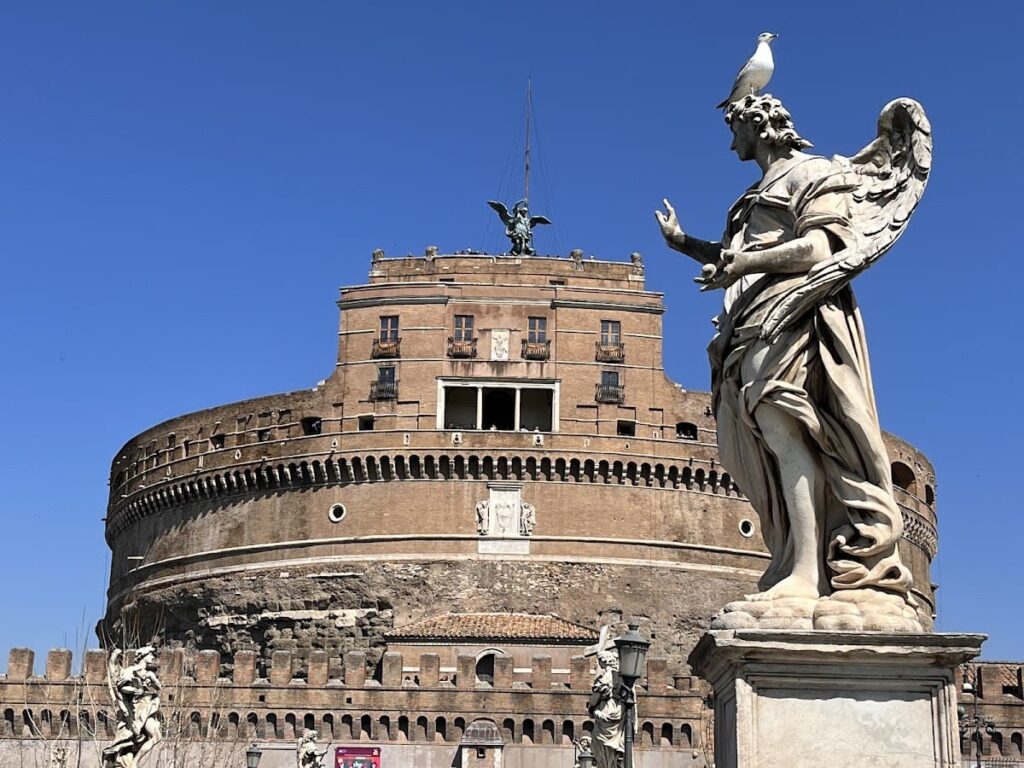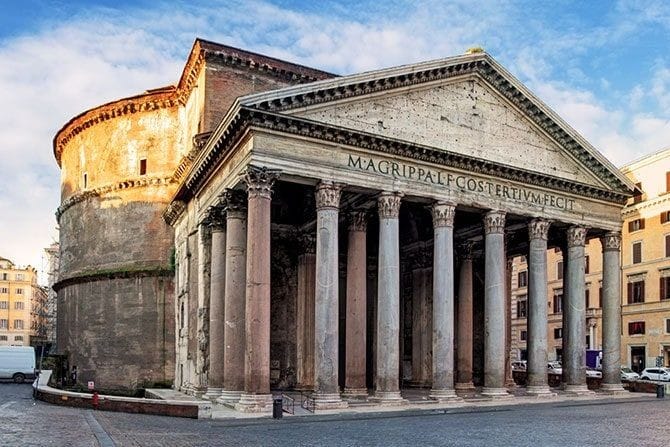Castel Sant’Angelo: Rome’s Historic Mausoleum and Fortress
Visitor Information
Google Rating: 4.7
Popularity: Very High
Google Maps: View on Google Maps
Official Website: castelsantangelo.beniculturali.it
Country: Italy
Civilization: Roman
Remains: Burial
History
Castel Sant’Angelo is located in Rome, Italy, along the Lungotevere Castello by the Tiber River. It was originally built by the Roman Empire during the 2nd century CE. Construction began between 135 and 139 CE under Emperor Hadrian, who commissioned it as a mausoleum for himself and his family. The design was inspired by the earlier Mausoleum of Augustus but executed on a larger scale. The architect Demetriano led the project, which was completed during the reign of Antoninus Pius.
Initially, the structure served as an imperial tomb, housing the remains of several emperors including Hadrian, Antoninus Pius, Marcus Aurelius, Septimius Severus, and Caracalla. The funerary chambers were richly decorated with colorful marble. This function continued until the early 5th century.
In 403 CE, Emperor Honorius incorporated the mausoleum into the Aurelian Walls, transforming it into a fortified castle as part of Rome’s defensive system. This marked a significant change from a tomb to a military stronghold. During the 5th century, the fortress successfully defended the Vatican area against Visigothic and Vandal attacks. In the early 6th century, the Ostrogothic king Theodoric used it as a state prison.
The name Castel Sant’Angelo dates from 590 CE, when Pope Gregory I reportedly witnessed a vision of the Archangel Michael atop the mausoleum. The angel was seen sheathing his sword during a plague procession, which was interpreted as a sign that the epidemic would end. This event gave the castle its enduring name and religious association.
Throughout the Middle Ages and Renaissance, the castle passed through the hands of several noble Roman families, including the Theophylact, Crescenzi, Pierleoni, and Orsini. The papacy also held ownership during this period. The castle underwent numerous modifications and fortifications to adapt to changing military and political needs.
In the late 13th century, Pope Nicholas III connected Castel Sant’Angelo to the Vatican by constructing the fortified Passetto corridor. This allowed the pope to move securely between the two sites and partially relocate the papal residence to the castle for protection.
The fortress served as a papal refuge during several sieges, most notably during the 1527 Sack of Rome. Pope Clement VII took shelter there as the city was attacked. Over time, the castle also became a papal residence, with richly decorated apartments and gardens, especially under Popes Alexander VI and Paul III. Some parts of the castle were demolished in 1628 to make way for new fortifications.
Castel Sant’Angelo functioned as a political prison until 1901. It held many notable prisoners, including the artist Benvenuto Cellini, the philosopher Giordano Bruno, and the noblewoman Beatrice Cenci. After the unification of Italy, the castle was used as a military barracks before being converted into a museum in 1906. Since 2014, it has been managed by the Italian Ministry of Cultural Heritage.
Remains
The site consists of a large mausoleum with a square base measuring approximately 84 to 89 meters on each side and standing 10 to 15 meters high. The base is clad in white Carrara marble and decorated with a frieze featuring ox skulls, known as bucrania, and corner pilasters. The main entrance arch, dedicated to Emperor Hadrian, faces the Tiber River.
Above the base rises a cylindrical drum about 64 meters in diameter and 20 meters tall. This section is constructed from peperino stone and Roman concrete (opus caementicium), covered with travertine and adorned with fluted pilasters. Atop the drum was a planted tumulus surrounded by marble statues, fragments of which survive, including the famous Barberini Faun.
The tumulus was originally crowned by a colossal bronze quadriga, a four-horse chariot sculpture depicting Hadrian as a solar deity. This stood on a high pedestal or circular tholos. The mausoleum was enclosed by a defensive wall featuring a bronze gate decorated with gilded bronze peacocks, two of which are preserved today in the Vatican.
Inside, a marble-lined spiral ramp illuminated by light wells connects the entrance passage (dromos) to the central funerary chamber. This chamber is square and fully clad in colorful marble. Two additional upper chambers likely served as burial cells.
Medieval and Renaissance modifications transformed the mausoleum into a fortress. Pentagonal bastions dedicated to the four evangelists, St. Matthew, St. Mark, St. Luke, and St. John, were added. A cylindrical tower near the bridge and a moat filled with water from the Tiber further enhanced its defenses.
The papal apartments occupy levels four through seven and include the Angel Courtyard, chapels, and richly frescoed rooms by artists such as Perin del Vaga. Notable rooms include the Pauline Hall, Perseus Hall, and the Stufa (private bath) of Clement VII, decorated with secular frescoes.
The castle contains multiple prison cells, including the infamous Sammalò (San Marocco) cell, a cramped vertical dungeon originally designed as a ventilation shaft. Other cells housed distinguished prisoners like Benvenuto Cellini and Alessandro Cagliostro.
Upper levels hold a library, a treasure room with armories and safes, considered by some to be Hadrian’s true burial chamber, and archives located in the “round room” and “column room.” The castle is crowned by a bronze statue of Archangel Michael, the current version created in 1753 by Peter Anton von Verschaffelt and restored in the 1980s. Earlier statues made of wood, marble, and bronze were repeatedly destroyed and replaced.
A fortified corridor known as the Passetto connects the castle to the Vatican, allowing secure passage. The nearby bridge, Ponte Sant’Angelo, features ten marble angels added in the late 17th century, giving the bridge its current name.
In the 20th century, the castle’s defensive structures and gardens were restored and landscaped. Barracks were removed, and a garden was created between the square walls and pentagonal bastions, preserving the site’s historical layers.










